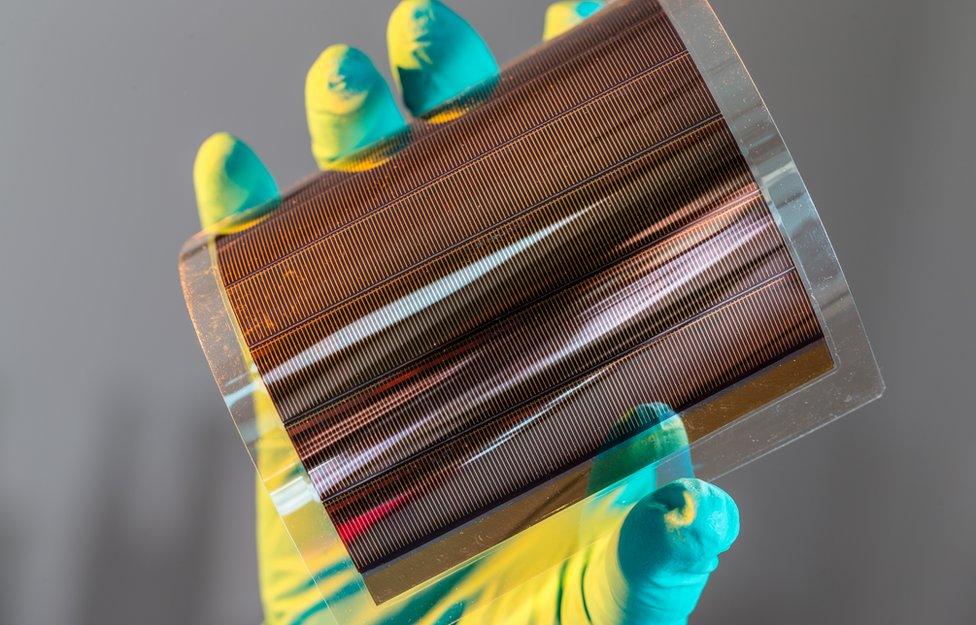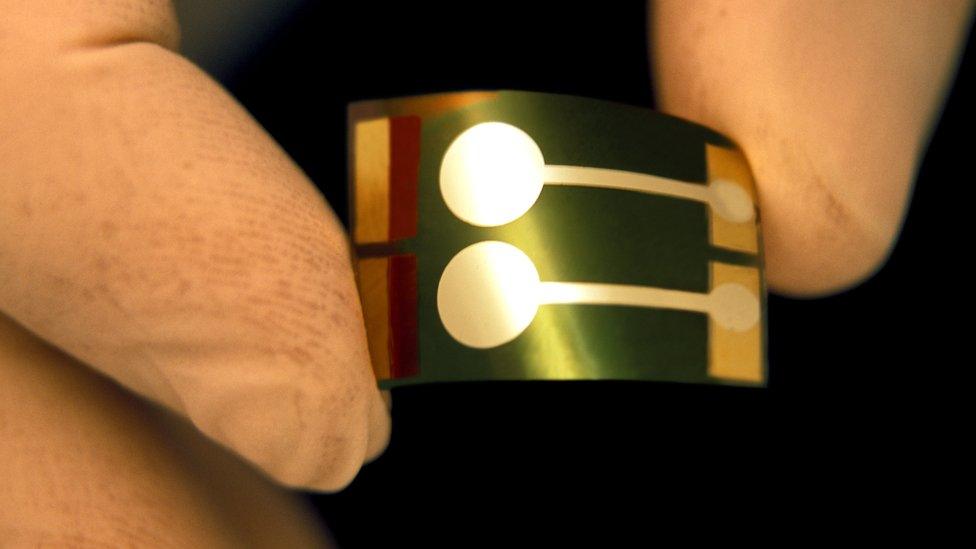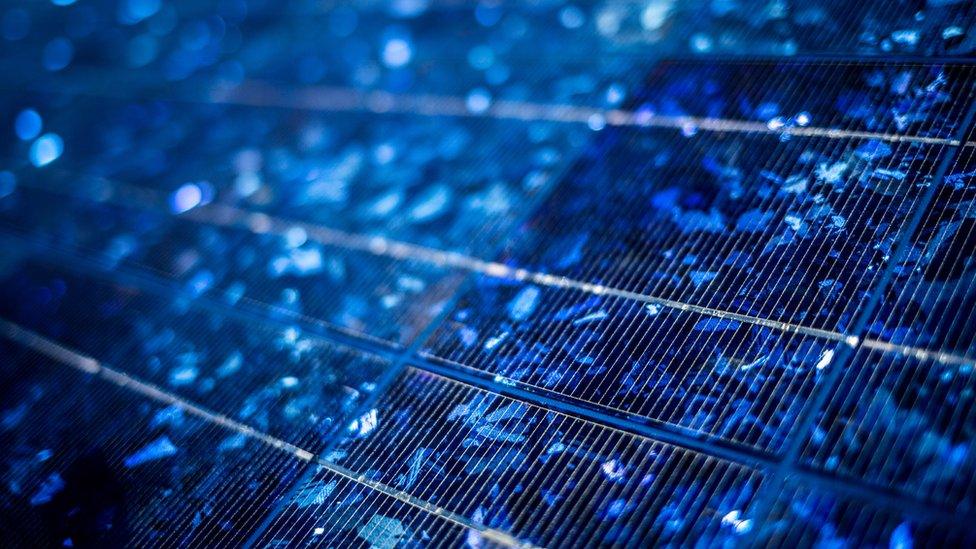Organic solar cells set 'remarkable' energy record
- Published

Organic solar cell module with six interconnected solar cells developed by Fraunhofer
Chinese researchers have taken what they say is a major step forward for the development of a new generation of solar cells.
Manufacturers have long used silicon to make solar panels because the material was the most efficient at converting sunlight into electricity.
But organic photovoltaics, made from carbon and plastic, promise a cheaper way of generating electricity.
This new study, external shows that organics can now be just as efficient as silicon.
What are organic solar cells?
The term organic relates to the fact that carbon-based materials are at the heart of these devices, rather than silicon. The square or rectangular solid solar panels that most of us are familiar with, require fixed installation points usually on roofs or in flat fields.
Organic photovoltaics (OPV) can be made of compounds that are dissolved in ink so they can be printed on thin rolls of plastic, they can bend or curve around structures or even be incorporated into clothing.
What's stopped them becoming widely used?
In a word - efficiency.

An example of how a flexible, organic solar cell might look
This is a measure of how much of the sunlight that shines on a panel can be turned into usable electricity.
Commercial solar photovoltaics usually covert 15-22% of sunlight, with a world record for a silicon cell of 27.3% , externalreached in this summer in the UK.
Organics have long lingered at around half this rate, but this year has seen some major leaps forward.
In April researchers were able to reach, external 15% in tests. Now this new study pushes that beyond 17% with the authors saying that up to 25% is possible.
This is important because according to estimates, with a 15% efficiency and a 20 year lifetime, organic solar cells could produce electricity at a cost of less than 7 cents per kilowatt-hour.
In 2017, the average cost of electricity in the US was 10.5 cents per kilowatt-hour, according to the US Energy Information Administration.
So what have these researchers done differently?
One of the things that has made OPV less efficient in the past is the fact that the organic materials have loosely bound molecules which can trap electrons and slow down the generation of electricity. So researchers have tried to get around this by putting different layers of material together in a what's termed a tandem cell approach.
"Tandem cell means you have two devices built together in the same structure," said one of the authors, Dr Yongsheng Chen, from Nankai University in Tianjin, China.
"We have two layers of active materials, each layer can absorb different wavelengths of light. That means you can use sunlight in the wider wavelengths or more efficiently and this can generate more current."
How far are these from commercial production?
Not that far away according to the researchers. Dr Yongsheng Chen compares the OPV to organic light-emitting diodes, or OLED. This technology has been introduced in the past few years and is widely used for high-end TVs.

Up close with a silicon-based solar panel
"These are already commercial, and they use a similar material to OPV," Dr Yongsheng Chen told BBC News.
"The physical principle is the same, just a different direction, one is from solar to electricity, the other from electricity to light, the device and structure are similar."
"I am very positive for OPV, and it may not need five years," he added.
What type of application might we expect?
Flexible, printed solar cells offer a wide range of possibilities. They can work indoors and they can be made semi-transparent, so they could be incorporated into windows and generate power during daylight.
They offer huge potential for buildings as they are lightweight so might be ideal for deploying on the roofs of houses in developing countries where structures might not suit heavy silicon. They could be used on the roofs of cars, and in clothes, even in glasses to charge your phone, external while you are out and about.
"Their optional semi-transparency enables their use in windows or glass facade shading," said Dr Alexander Colsmann and expert on organic photovoltaics from the Karlsruhe Institute of Technology.
"The very same properties render organic solar cells ideally suited to also power mobile applications - camping gear, smart wearables or phone chargers, just to name a few - which have been only insufficiently addressed by classical solar cell technologies such as silicon."
What's been the reaction of others in the field?
Other experts in this field were generally positive.
"This looks a remarkable result to me," said Dr Artem Bakulin, from Imperial College London.
"The development of such new materials with previously unthinkable properties allowed them to achieve the reported record efficiency and, in general, makes OPV technology much more promising."
Dr Feng Gao from Linköping University in Sweden also believes the new paper is significant.
"This work is a very important contribution to organic solar cells and will certainly inspire new developments in the field," he said by email.
"The tandem organic solar cells with record efficiencies in this work indicate great potential of organic solar cells for practical applications."